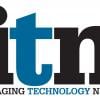
Greg Freiherr has reported on developments in radiology since 1983. He runs the consulting service, The Freiherr Group.
BLOG: How Customer Needs Impact Product Innovation

A volume of contrast agent lingers near the injection site, creating an artifact that can block the visualization of structures. Graphic courtesy of Lior Molvin
When it comes to listing needs, patient safety ranks at the top. Just ask an imaging administrator.
“There is no way we can provide good quality customer care any other way,” said Brent Purscelley, director of ambulatory services at the Frederick Regional Health System.
But even when it comes to patient safety, distinguishing between needs and wants can get tricky. This is especially so when the frequency of patient complications gets very low.
Take CT contrast extravasations, for example. The leakage of contrast media from an intended blood vessel occurs very infrequently, only between 0.1 and 1.2 percent of administrations, according to the 2018 edition of the American College of Radiology (ACR) Manual on Contrast Media (version 10.3). Severe injuries due to extravasation may occur even more rarely.
“We have the technology today to monitor patients via sensors,” Purscelley said, “but it (extravasation) doesn’t happen often enough to really justify spending the additional money to do (the monitoring).”
The Role Of Smart Injectors
That’s where “smart” injectors come in. Not only do they alert technologists to ongoing problems, but –like black boxes on commercial airliners – they can record the data surrounding events, helping administrators understand the circumstances that led to them. Applied with preventative measures, these smart injectors can make a huge difference in patient safety.
To reduce the risk of extravasation, technologists at Frederick Regional Health System use a large gauge IV needle and tube; make sure needle placement is optimal; and assess patients for risk factors prior to contrast-enhanced scans, according to Christopher Nield, imaging supervisor there. The techs also use saline to test IV lines for stability prior to the injection of contrast agents. Additionally, the health system uses power injectors that alert techs to events that could indicate an ongoing extravasation.
The amount of time expended to do a procedure is also a factor. Increased turnaround time can decrease patient satisfaction, as it can increase provider and technologist frustration, according to Nield.
Bracco-made injectors record and display data about their performance. The appearance of a pressure spike on an injector display may indicate the occurrence of an extravasation. A networked smart injector can alert techs, radiologists and administrators to an ongoing event. The injector data can be interpreted in the context of the patient’s physical signs and the type of contrast-enhanced examination.
SmartInject solutions, built into Bracco-made injectors, display and document CT and MRI contrast administrations. These injectors can inject saline bolus chasers to push the contrast agent. If such a chaser is not used, a substantial amount of the contrast agent may linger near the injection site, potentially causing artifacts that block the visualization of important structures. Saline injections, before administration of the contrast medium, may also be used to test the stability of the IV needle and its placement in the vein.
Tracking Radiation Dose
Keeping track of radiation dose is critically important to minimizing the amount of patient radiation, which is essential to patient safety. Bracco’s NEXO information system for dose can track patient radiation exposure automatically regardless of the type of imaging system used. The multimodality radiation informatics system monitors and analyzes exposure data in real time and across the enterprise. When those data veer outside set parameters, NEXO sends an alert to physicians, technologists or administrators – whoever the system has been assigned to notify.
Similar capabilities regarding contrast media is achieved with the NEXO Contrast Management System, which uses SmartInject technology. As with the dose-oriented software, NEXO updates patient records by synchronizing with the RIS/PACS, EMR, or voice dictation system used in radiology.
The two systems – one for managing contrast, the other for keeping track of radiation – help meet not only patient needs but needs of the provider. Among provider needs is compliance with requirements, for example, ones set by The Joint Commission.
Because neither MRI nor ultrasound exposes patients to ionizing radiation, their use negates the need to track ionizing radiation, which accompanies CT and radiography/fluoroscopy. Issues surrounding contrast media, however, remain. Providers, therefore, must consider all sorts of risks. Among them is the lack of reliability.
Besides being easy to use, power injectors have to be rugged enough to stand up to the beatings that can be dished out in emergency rooms. Overall reliability, according to Nield, is critically important. “If we have an injector down, the scanner is out for some studies,” he said. “Then we have real issues.”
Editor’s Note: This is the third blog in a series titled Using Contrast Media. The first blog, Why Power Injectors Are Needed for High-quality Imaging, can be found here. The second blog, How Advances in Technology Help Patients and Providers, can be found here. The final blog in this four-part series will consider the value derived from smart injectors and informatics.
Related content:
BLOG: Why Power Injectors Are Needed for High-Quality Imaging
BLOG: How Advances in Technology Help Patients and Providers


 November 26, 2025
November 26, 2025 









